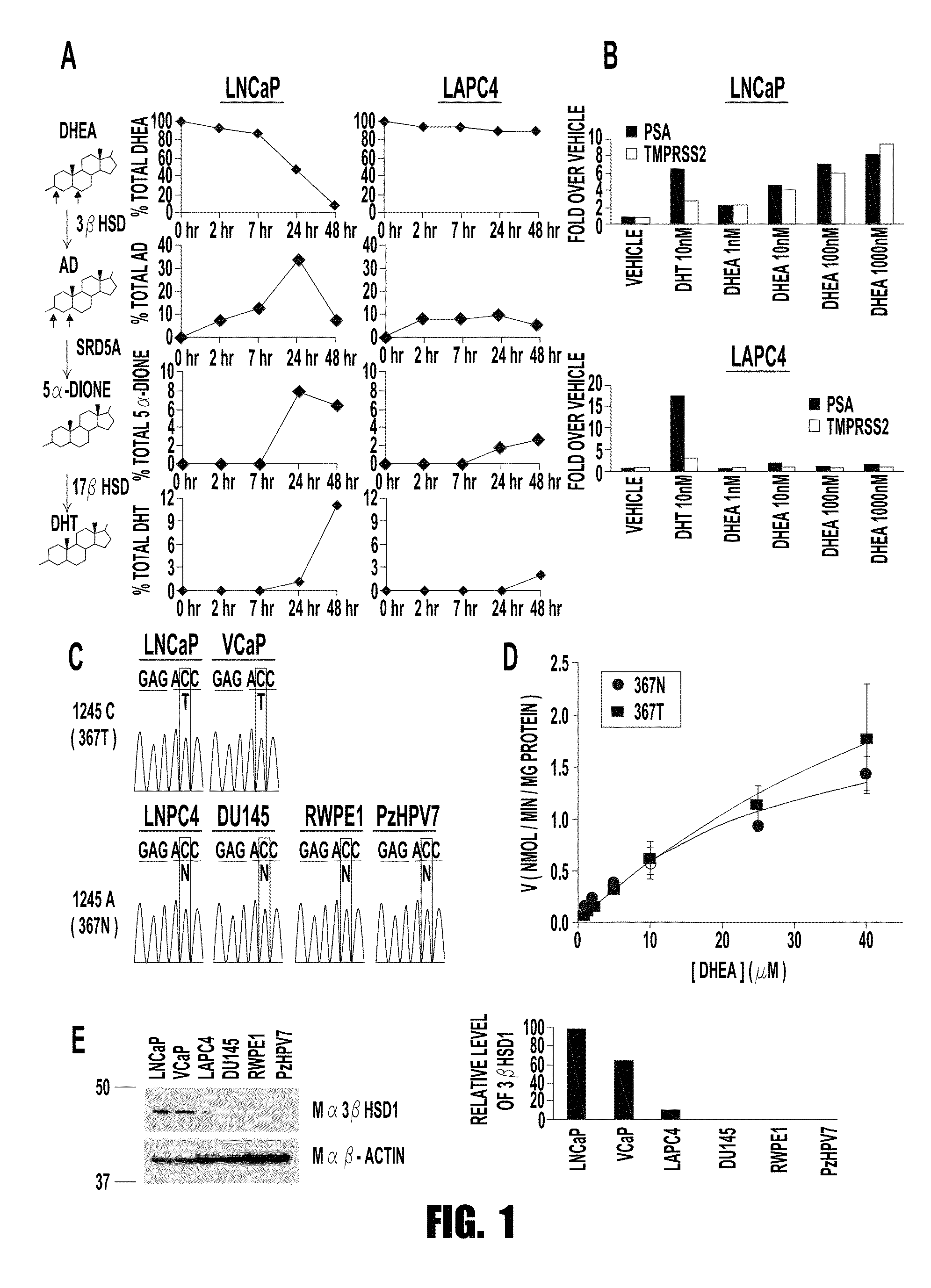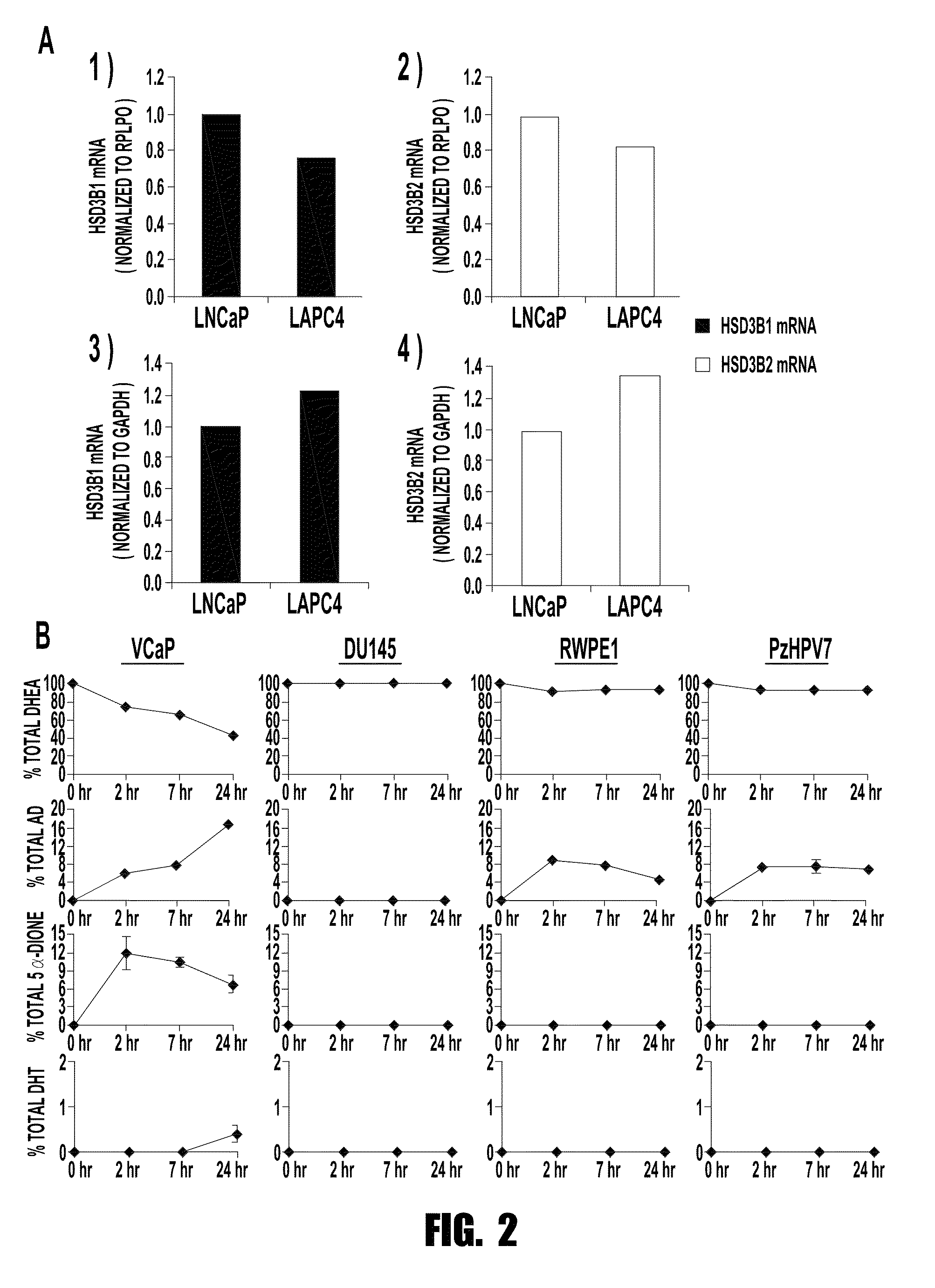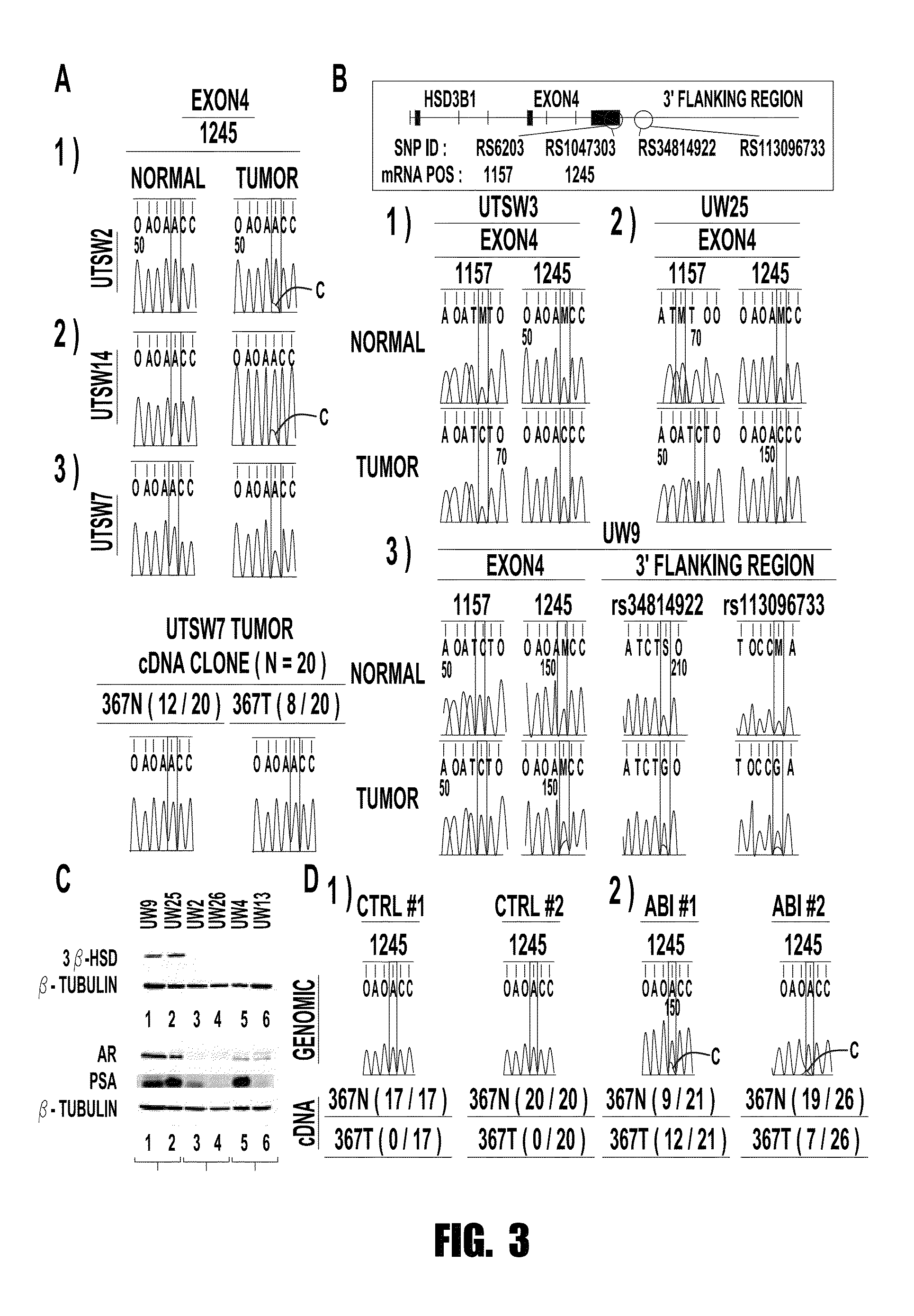3b-hydroxysteroid dehydrogenase in steroid-dependent disease
a technology of steroid-dependent disease and dehydrogenase, which is applied in the direction of material analysis, library screening, sugar derivatives, etc., can solve the problem that tumors often recur
- Summary
- Abstract
- Description
- Claims
- Application Information
AI Technical Summary
Benefits of technology
Problems solved by technology
Method used
Image
Examples
example 1
A Genetic Mechanism Augments DHT Synthesis in Castration-Resistant Prostate Cancer
[0072]The inventors show herein that CRPC sometimes expresses the 367T form of 3βHSD1 (3βHSD1(367T)), which increases metabolic flux from dehydroepiandrosterone (DHEA) via the 5α-androstanedione (5α-dione) pathway to DHT by protein resistance to ubiquitination and degradation rather than increased catalytic activity. Selection for 3βHSD1(367T) is evident from somatic mutation in human CRPC tumors, by loss-of-heterozygosity (LOH) of the wild-type copy in patients with germline heterozygous inheritance and from the generation and expression of the same somatic mutation occurring in a mouse xenograft model treated with abiraterone acetate.
Results
[0073]Cells with 3βHSD1(367T) have Increased Flux to DHT.
[0074]Conversion of DHEA by 3βHSD1 to Δ4-androstenedione (AD) is a proximal step in peripheral tissues for metabolism from adrenal precursors to DHT. Lorence et al., Endocrinology 126, 2493-2498 (1990); Sima...
example 2
Germline / Somatic Mutation Detection Assay
[0129]Somatic Mutation Detection (PCR1):
[0130]The (N367T) somatic mutation in the wild type individuals is detected through an asymmetric PCR assay using an unlabelled 3′-locked Nucleic acid (LNA) specific to the wild type allele that blocks the amplification of the wild type allele allowing the mutant allele to be preferentially amplified. The endpoint fluorescence melting of the DNA saturating dye results in a melting kinetic that is specific to the probe / mutant target duplex which can be compared to the melting temperature of the probe / wild type target duplex resulting from a second non-blocking PCR that amplifies both alleles equally. The assay is sensitive to 0.75% of the mutant allele in the total allele population.
[0131]For each sample, prepare two PCR mixtures as shown in Table 1 below:
TABLE 11 reactionMultiple reactionsComponent20μl reaction80Lightcycler HRM LCGreen8640Master mixForward Primer (1 μM)180Reverse Primer (10 μM)180LNA Pr...
PUM
| Property | Measurement | Unit |
|---|---|---|
| Electrical resistance | aaaaa | aaaaa |
Abstract
Description
Claims
Application Information
 Login to View More
Login to View More - R&D Engineer
- R&D Manager
- IP Professional
- Industry Leading Data Capabilities
- Powerful AI technology
- Patent DNA Extraction
Browse by: Latest US Patents, China's latest patents, Technical Efficacy Thesaurus, Application Domain, Technology Topic, Popular Technical Reports.
© 2024 PatSnap. All rights reserved.Legal|Privacy policy|Modern Slavery Act Transparency Statement|Sitemap|About US| Contact US: help@patsnap.com










